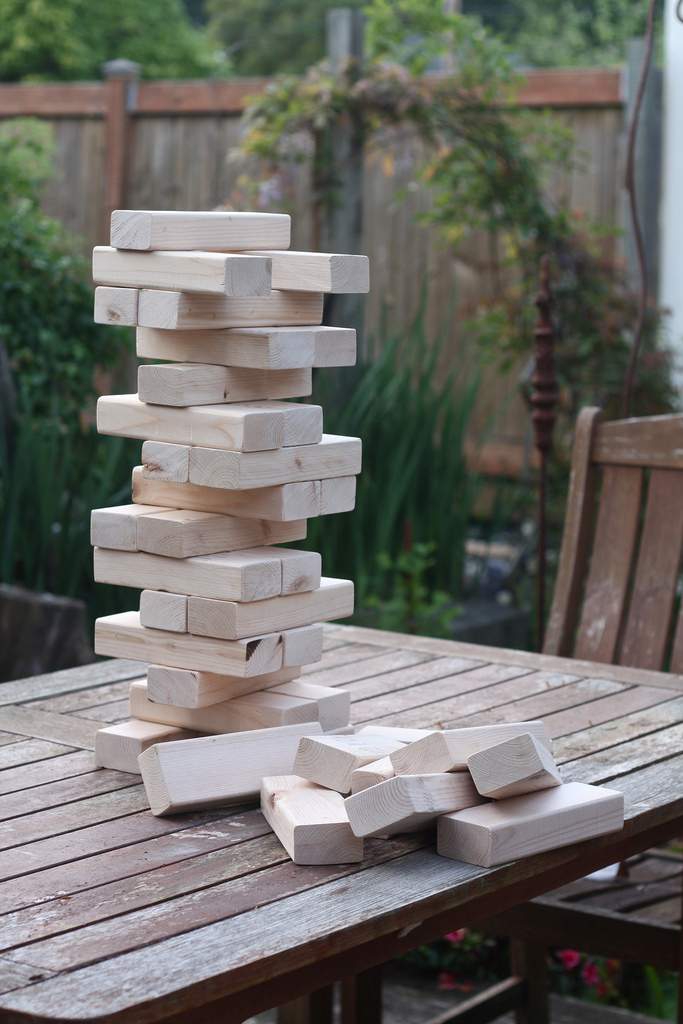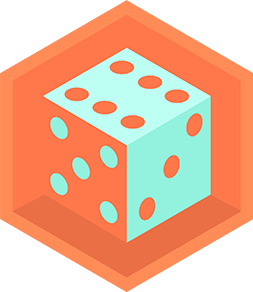Make a stacking game
Make a tabletop stacking game using cardboard or wooden blocks, create scoring rules and challenge levels, then test balance, strategy, and focus.



Step-by-step guide to make a tabletop stacking game
How To Play Tower Stacks - SmartGames
Step 1
Decide if you will use ready wooden blocks or make your own cardboard blocks and tell an adult which you chose.
Step 2
If making cardboard blocks measure and mark equal rectangles on cardboard with your ruler and pencil then cut out at least 12 blocks (skip this step if you use wooden blocks).
Step 3
Strengthen each cardboard block by folding tabs or wrapping tape around the edges so they stay sturdy while stacking.
Step 4
Decorate each block with colours numbers or symbols using your colouring materials so they are fun and easy to read.
Step 5
Cut your sturdy cardboard base to a size that fits your play table and mark a clear starting zone in the centre with your pencil.
Step 6
Write simple scoring rules on paper deciding how many points a successful placement earns and what happens if the tower falls.
Step 7
Create three challenge levels on your paper: Easy Medium and Hard with different rules like time limits one-hand only or starting shape.
Step 8
Set up one challenge level and play one timed round to build a tower while testing balance strategy and focus.
Step 9
Change a rule or block layout based on what happened in the test and play a second round to see if the game is more fun or fair.
Step 10
Tell a friend or family member to play a full game using your rules record the scores and share your finished stacking game on DIY.org
Final steps
You're almost there! Complete all the steps, bring your creation to life, post it, and conquer the challenge!


Help!?
What can we use if we don't have ready wooden blocks or thick cardboard?
Use clean cereal or shipping boxes to cut equal rectangles following the "measure and mark" step with your ruler and pencil to make at least 12 blocks, or substitute sturdy foam board, stacking plastic cups, or glued wooden craft sticks as described in the cardboard-block options.
My cardboard blocks keep bending and the tower keeps falling—how do I fix that?
Follow the strengthen-each-block step by folding tabs or wrapping several layers of strong packing tape around the edges, or glue two layers of cardboard together before cutting so the blocks stay rigid while stacking.
How can I adjust the game for younger children or make it more challenging for older kids?
For younger kids use larger blocks or fewer than 12 pieces with no time limit and very simple scoring on your paper, while for older kids use smaller blocks, keep at least 12 pieces, and apply Hard rules like one-hand-only or tight time limits from the challenge-level step.
What are simple ways to extend or personalize the stacking game after the first test rounds?
Decorate blocks with matching colours or numbers as in the decorate step, add new scoring rules or math challenges on your paper, invent extra challenge levels (for example blindfolded or patterned starts), and keep a scoreboard to record scores before sharing the finished game on DIY.org.
Watch videos on how to make a tabletop stacking game
DIY: Cup stacking with friends! | WFSU PBS Kids
Facts about tabletop game design and building for kids
⚖️ A tower stays standing when its center of mass lies above its base of support — move it too far and it topples.
📦 Corrugated cardboard is made of fluted paper sandwiched between liners, which gives it surprising strength for building.
🧱 Jenga was invented by Leslie Scott and released commercially in 1983, inspiring many stacking game designs.
🔢 The Tower of Hanoi puzzle can be solved in 2^n − 1 moves for n disks — a neat math trick for designing challenge levels.
🌳 Wooden blocks are among the oldest toys and help kids develop spatial reasoning and fine motor skills.
How do I make a tabletop stacking game using cardboard or wooden blocks?
What materials do I need to make a tabletop stacking game?
What ages is this stacking game suitable for?
What safety tips and variations should I consider for this stacking game?


One subscription, many ways to play and learn.
Only $6.99 after trial. No credit card required


